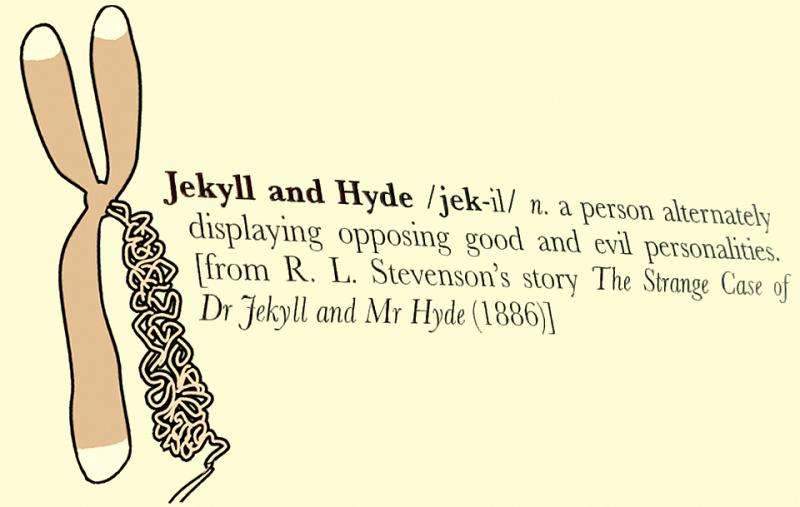Dr. Jekyll & Mr. Hyde: Telomere and telomerase in stem cells

When a human cell divides, its daughter cells should each receive an identical copy of the mother cell's genome. Occasionally mistakes occur during this process, generating mutations that can give rise to cancer. To avoid detrimental outcomes for the organism, cells with mutations that generate deviations from the normal chromosomal number are eliminated by cellular protection mechanisms. Researchers from the Leibniz Institute for Age Research – Fritz Lipmann Institute (Jena, Germany) have now identified a crucial role of telomeres, the end structures of chromosomes, for sensing cells with an incorrect chromosome number, referred to as aneuploidy. Telomeres respond to aneuploidy by generating stress signals that suppress the proliferation of aneuploid cells. However, telomerase, the enzyme, which can synthesize telomeres, may also support the survival of aneuploid cells by alleviating telomere-induced stress signals in response to aneuploidy. Thus, it promotes carcinogenesis instead of preventing it.
Telomeres, the end structures of linear chromosomes, are composed of repetitive DNA sequences (TTAGGG in humans) and specialized telomere-binding proteins. They form protective caps at the ends of linear chromosomes to prevent chromosomal instability. For the complete replication of telomeric DNA and the functionality of telomeres, the activity of a telomere-specific DNA polymerase, the telomerase, is required.
Studies in the last two decades have revealed that telomeres and telomerase have dual functions in suppressing and facilitating tumorigenesis: In the adult human, the activity of telomerase is mostly restricted to the stem cells and is absent from the vast majority of human cells. In the absence of telomerase, telomere shortening limits cellular life span and prevents tumorigenesis. However, cells with overly short telomeres can lose capping function leading to a cellular catastrophe and genetic instability: the origin of many cancer types. In this scenario, telomerase activity is protecting from tumor formation that can be initiated by these dysfunctional telomeres.
Researchers from Leibniz Institute for Age Research – Fritz Lipmann Institute (FLI) in Jena, Germany, have now found surprising news on the role that telomeres and telomerase play for the tumorigenic process (published in the EMBO Journal). These new findings reveal that long, functional telomeres can sense chromosomal imbalances and suppress the proliferation and growth of cells with aneuploidy. In this context, telomerase activity can have unfavorable effects: "We found that this enzyme allows cells with aneuploidy to bypass the protective function of telomeres. It thereby supports the survival of defective cells which, in the end, can evolve into tumor cells," Dr. Cagatay Günes explains. In this scenario, telomerase promotes carcinogenesis instead of preventing it. "It's like Dr. Jekyll suddenly turning into Mr. Hyde," Dr. Günes says.
New Approach for Cancer Therapy
"Our findings suggest telomeres and telomerase as potential targets for tumor therapy – but in a totally new way," Prof. Dr. Karl-Lenhard Rudolph, Scientific Director of FLI, explains. Up to now, it was assumed that by suppressing the telomerase activity, tumor cells might be eliminated due to telomere shortening. However, this treatment would require long treatment periods, as telomeres shorten by small steps over several cell divisions. The new results of this study imply that the suppression of telomerase activity may immediately stop tumor cell proliferation.
The findings also raise new questions for basic research that demand future studies: How do telomeres sense imbalances in chromosome number? How does telomerase manage to bypass the protective function of telomeres?
More information: "Telomerase abrogates aneuploidy-induced telomere replication stress, senescence and cell depletion." EMBO J. 2015 Mar 27. pii: e201490070. DOI: 10.15252/embj.201490070
Journal information: EMBO Journal
Provided by Leibniz Institute for Age Research





















